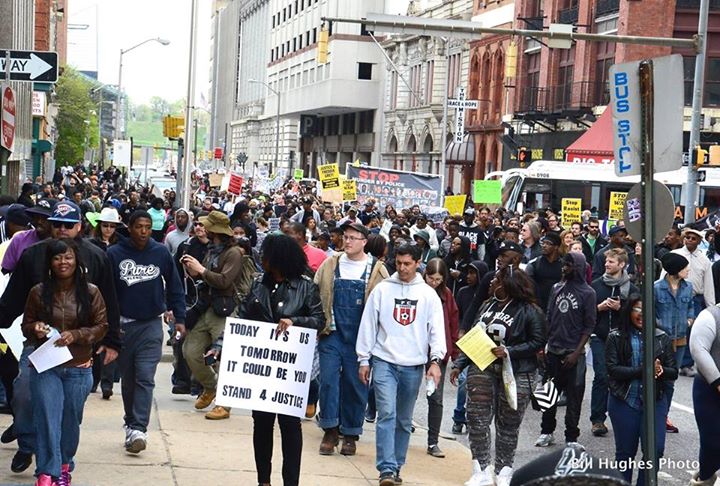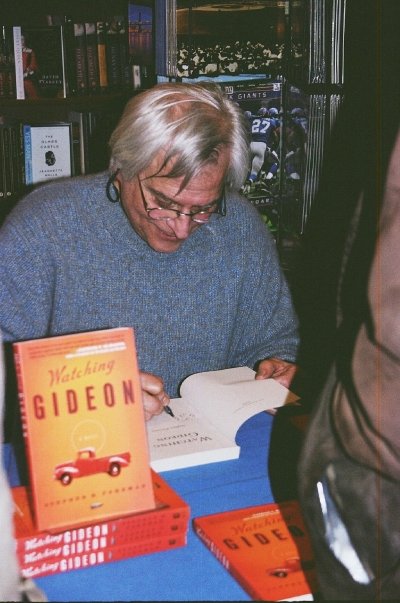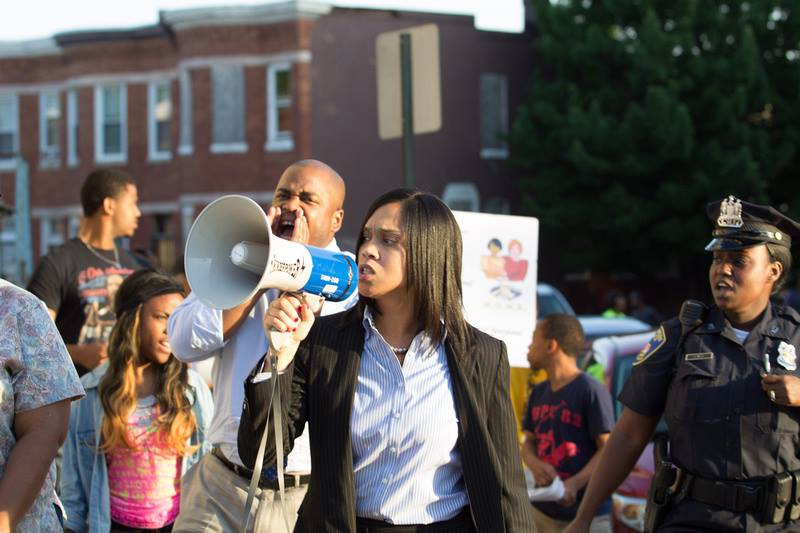BALTIMORE BEFORE THE 1950s
WAS A SEGREGATED SOUTHERN TOWN
THAT HAS INTEGRATED EXCEPTIONALLY WELL
Race, poverty and turmoil in the mix
(A personal perspective)
————— ————— —————

Protesters march in Baltimore during city’s most violent week since the assassination of Rev. Martin Luther King Jr. in 1968. The April 2015 demonstrations were orderly
and predominantly peaceful. (VoB file photo/Bill Hughes)
NEW MILLENNIUM ‘CHARM CITY’
IS NOT THE RACIALLY BIASED REGION
OF THE EARLY-MID 20th CENTURY
An age long gone when children walked to school,
when inner-city neighborhoods were safe & secure;
when race and ethnicity served as a dividing line
CHARLATANS LIKE SHARPTON
‘No Dogs or Jews’ at Meadowbrook
By Alan Z. Forman
In the wake of the death of Freddie Gray at the hands of Baltimore police, followed by over a week of peaceful demonstration punctuated by little more than a day of rioting and looting, it has become popular for politicians, national media and various and sundry activists to analyze and demonize the City of Baltimore for its failure to be perfect.
To say that Baltimore in 2015 is wracked by poverty and murder would certainly be an understate- ment, and to include these among the causes for the conflict is obvious. But this is only part of The B’more Story and totally ignores the good side of this quintessential New Millennium city that is struggling to right the wrongs of its provincial Southern past.
I grew up in segregated Baltimore at a time when blacks and Jews hesitated to enter Roland Park and Guilford, even Towson; when Meadowbrook Aquatic & Fitness Center, where Olympian Michael Phelps now trains, had a sandwich-board sign near its entrance, warning prospective patrons: “No Dogs or Jews” allowed.
It didn’t have to say “No Blacks”; that was understood.
Upscale Baltimore neighborhoods like Homeland, Roland Park and Guilford had covenants in their deeds restricting the sale of homes to WASPy families only.
Polish Baltimoreans lived in Highlandtown and Canton; Italians lived in Little Italy. Blue collar families were in Curtis Bay, Fells Point and Westport, and outside the city limits in areas such as Essex and Dundalk. Blacks were not allowed to live in Hampden.
“Negroes,” as Supreme Court Justice Thurgood Marshall famously identified himself late in life when a reporter apologized for not referring to him as “black,” lived predominantly in West Baltimore, mostly below North Avenue, which was once the northernmost boundary of the city.










